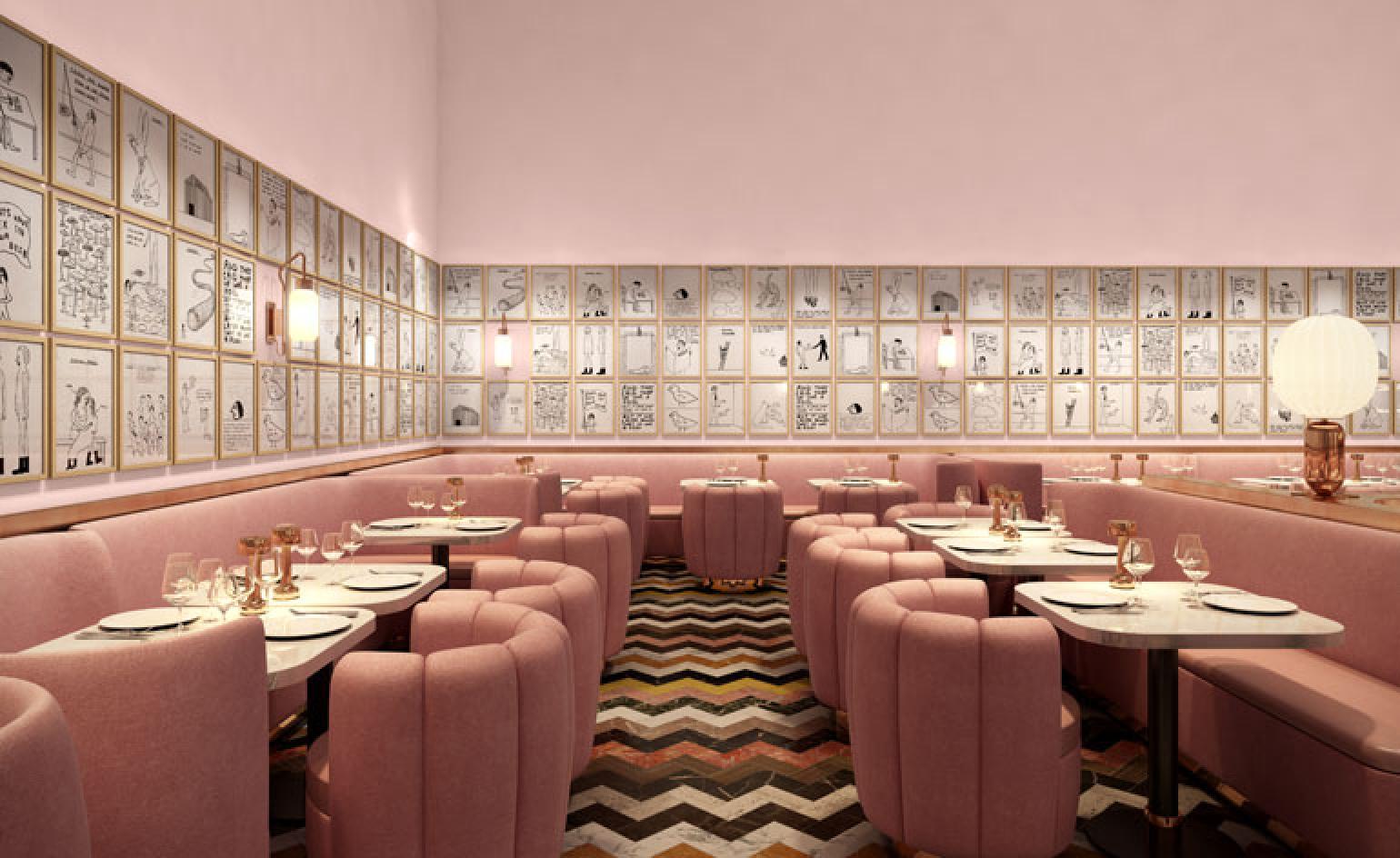Martin Creed revamps the Gallery restaurant at Sketch, London
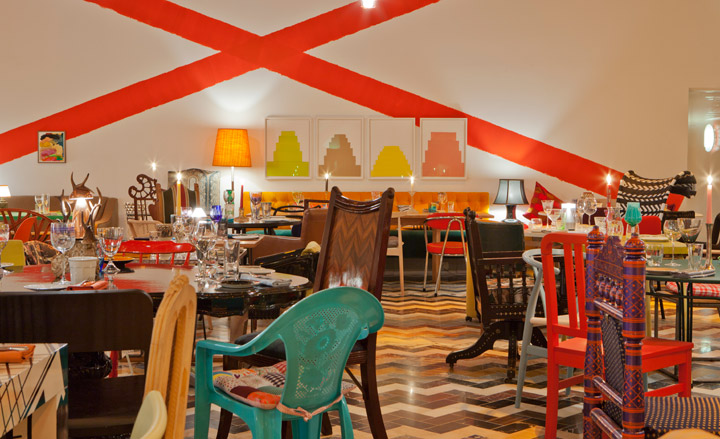
Inviting an artist known for sculptures of perilously stacked furniture to design a restaurant is a risky business - even for Sketch, the London dining and arts space known for its provocative interiors. So, when we heard that British artist Martin Creed had turned its entire Gallery restaurant into a giant sculpture, we thought perhaps it had bitten off more than it could chew.
Thankfully, however, Creed - who won the Turner Prize in 2001 for turning the lights on and off in the Tate - has resisted the urge to stack. 'Work No. 1347' comprises a zigzagging blaze of multicoloured marble that stretches across the floor, before being picked up in a series of large-scale wall paintings.
'Work No. 1343', meanwhile, comprises every single piece of furniture and cutlery in the restaurant - with each one being different. Into all this steps the diner, becoming part of the work itself and a vehicle in Creed's explorations into human experience.
We wouldn't normally advocate cramming a room with every conceivable style of furniture. But it is hard not to be won over by the wit and energy of Creed's creation. Not to mention the detail and craftsmanship in the flooring, and the burst of colour that brings the whole project together.
For Sketch, Creed's work is a way to recapture some of the daringness of its youth. His creation is the first in a long-term programme of artist-conceived restaurants at the venue, opened ten years ago by Mourad Mazouz and Michelin-starred chef Pierre Gagnaire. As for the artist's take on the project? We caught up with him to find out more...
What appealed to you about the project?
I was interested in it for the same reason I like to do public work. I want to make my work better and I want my work to survive in a hostile environment. Galleries are so cosseting and precious. In a way, they are fake environments. Art becomes less self-conscious when people are doing other things around it; when the work is just a backdrop.
What brief were you given?
There was no brief whatsoever, apart from the fact that it had to be a functional restaurant. I was worried that this might comprise my work but, at the same time, it was this 'functional' aspect that made me want to do it.
Your work often has a level of human interaction. Is the role of the diner at Sketch going to be integral to the project?
The diner is the most important thing in the space. I simply hope my work is a nice place to sit. All my ideas about my work are irrelevant. I don't expect anything other than that the diner has a nice time.
Tell us about the floor...
It was the starting point of the project. I think marble is the most beautiful material. I couldn't decide which type is best so I have included as many as I could find: almost 100. The floor is divided by stripes of about the same number. Stripes are a good way of lining things up but I don't like to decide the direction of them, so I chose zigzags.
Could you describe yourself as a little indecisive then?
Just a bit. All my work is based on not knowing what I want or trying to have everything. But in the microcosm of what I do - like choosing types of marble or furniture - I literally can have everything. I like to turn indecision into a beautiful thing, rather than a failure.
Will the lights be turning on and off?
No! But the lights are all part of the sculpture, and once again, everything's there: candles, hanging lamps, table lamps and standing lamps. Turning the lights on and off wouldn't exactly make life easy for the restaurant. Choosing plates and cutlery in a million different sizes is a challenge enough for them.
Describe your creative process?
I don't sketch - I start with words. So the realisation of the work can be a big surprise - and not always a pleasant one. In this case, however, I am happy and excited about the outcome.
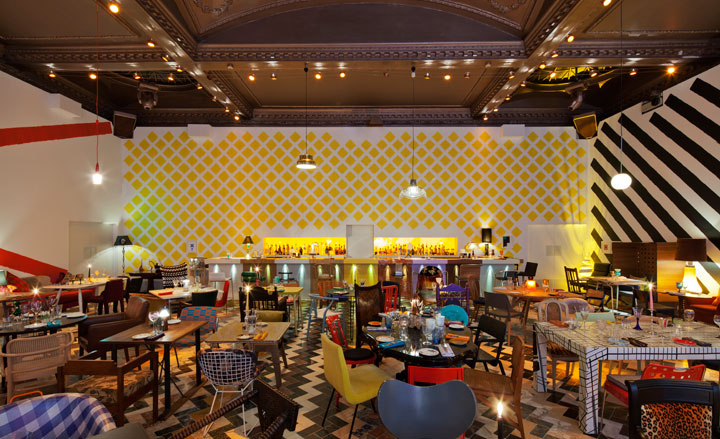
Titled 'Work No. 1343', it brings together mass produced pieces with the handcrafted; antiques with contemporary design
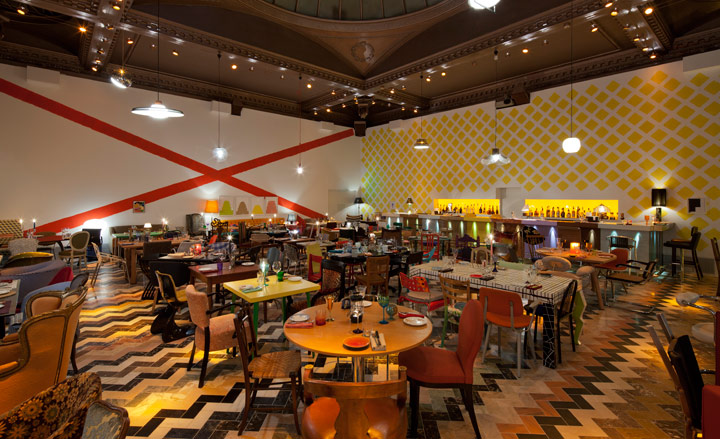
For 'Work No. 1347', the former Turner Prize winner has brought together 96 types of marble in a geometric formation on the floor, whose pattern is picked up in the wall paintings
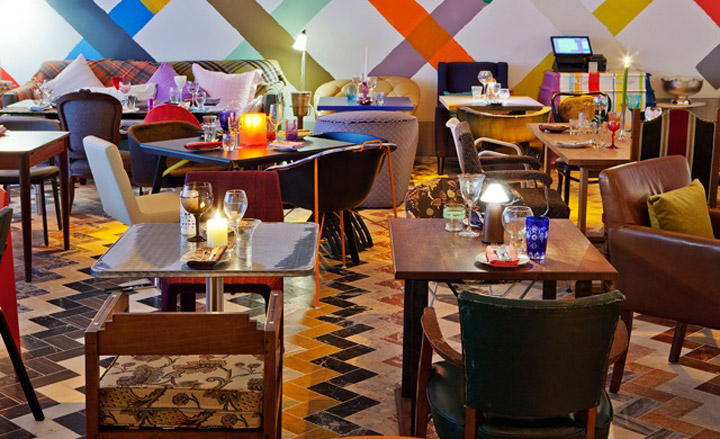
'Stripes are a good way of lining things up but I don't like to decide the direction of them, so I chose zigzags,' says Creed
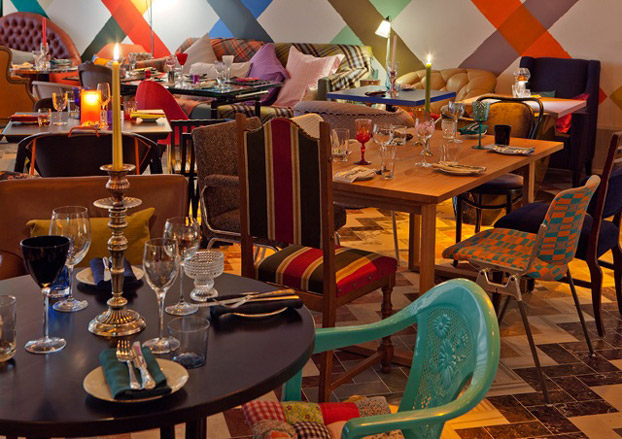
Sketch chef Pierre Gagnaire has conceived a menu for the restaurant that echoes the artist's concerns
ADDRESS
Sketch
9 conduit street
London W1S 2XG
Wallpaper* Newsletter
Receive our daily digest of inspiration, escapism and design stories from around the world direct to your inbox.
Malaika Byng is an editor, writer and consultant covering everything from architecture, design and ecology to art and craft. She was online editor for Wallpaper* magazine for three years and more recently editor of Crafts magazine, until she decided to go freelance in 2022. Based in London, she now writes for the Financial Times, Metropolis, Kinfolk and The Plant, among others.
-
 Put these emerging artists on your radar
Put these emerging artists on your radarThis crop of six new talents is poised to shake up the art world. Get to know them now
By Tianna Williams
-
 Dining at Pyrá feels like a Mediterranean kiss on both cheeks
Dining at Pyrá feels like a Mediterranean kiss on both cheeksDesigned by House of Dré, this Lonsdale Road addition dishes up an enticing fusion of Greek and Spanish cooking
By Sofia de la Cruz
-
 Creased, crumpled: S/S 2025 menswear is about clothes that have ‘lived a life’
Creased, crumpled: S/S 2025 menswear is about clothes that have ‘lived a life’The S/S 2025 menswear collections see designers embrace the creased and the crumpled, conjuring a mood of laidback languor that ran through the season – captured here by photographer Steve Harnacke and stylist Nicola Neri for Wallpaper*
By Jack Moss
